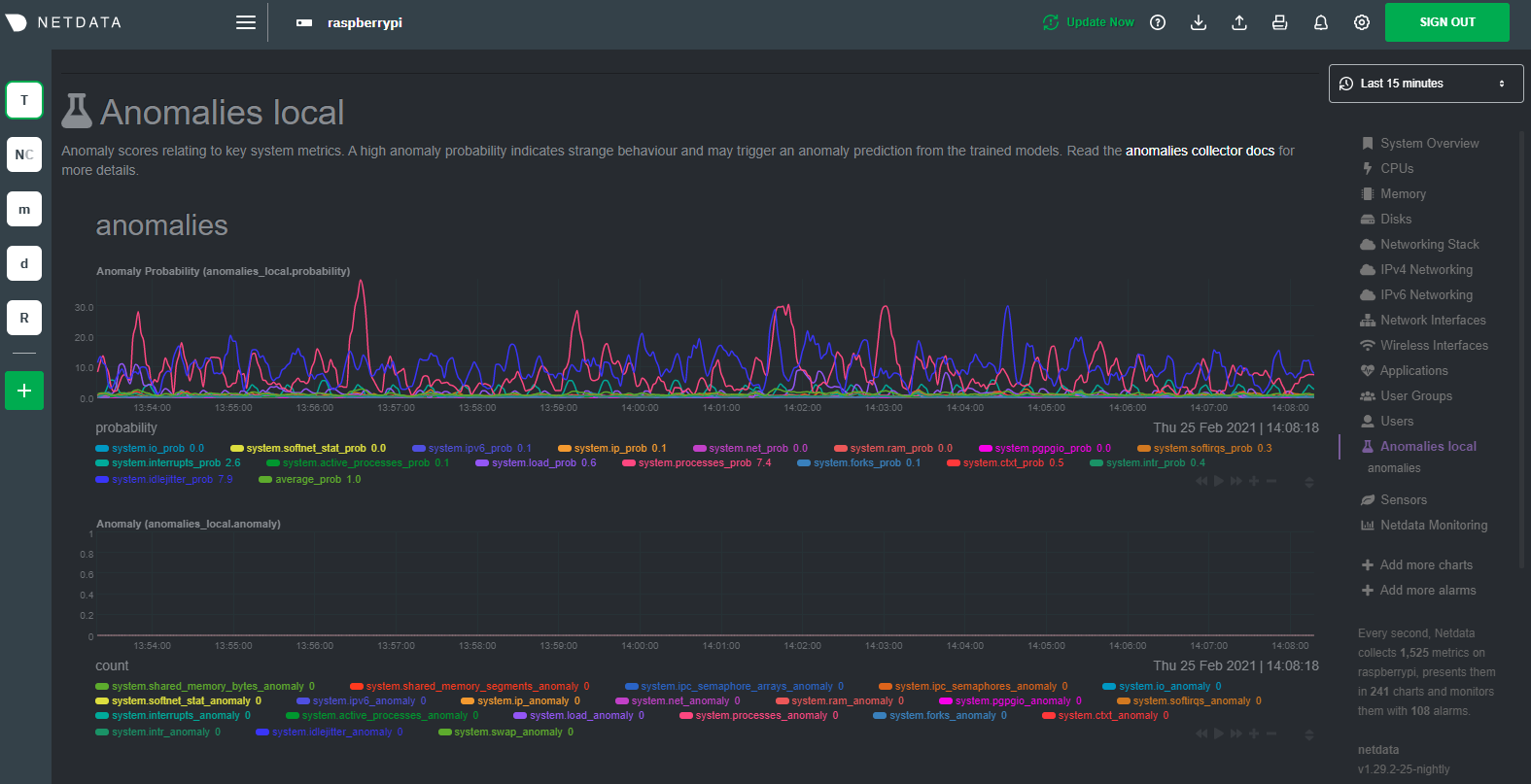mirror of
https://github.com/netdata/netdata.git
synced 2025-04-15 18:14:15 +00:00
* make the title metadta the H1 * Update collectors/python.d.plugin/zscores/README.md * Update libnetdata/ebpf/README.md * Update ml/README.md * Update libnetdata/string/README.md --------- Co-authored-by: Chris Akritidis <43294513+cakrit@users.noreply.github.com>
104 lines
4.8 KiB
Markdown
104 lines
4.8 KiB
Markdown
<!--
|
|
title: "Unsupervised anomaly detection for Raspberry Pi monitoring"
|
|
sidebar_label: "Unsupervised anomaly detection for Raspberry Pi monitoring"
|
|
description: "Use a low-overhead machine learning algorithm and an open-source monitoring tool to detect anomalous metrics on a Raspberry Pi."
|
|
image: /img/seo/guides/monitor/raspberry-pi-anomaly-detection.png
|
|
custom_edit_url: https://github.com/netdata/netdata/edit/master/docs/guides/monitor/raspberry-pi-anomaly-detection.md
|
|
learn_status: "Published"
|
|
learn_rel_path: "Miscellaneous"
|
|
-->
|
|
|
|
# Unsupervised anomaly detection for Raspberry Pi monitoring
|
|
|
|
We love IoT and edge at Netdata, we also love machine learning. Even better if we can combine the two to ease the pain
|
|
of monitoring increasingly complex systems.
|
|
|
|
We recently explored what might be involved in enabling our Python-based [anomalies
|
|
collector](https://github.com/netdata/netdata/blob/master/collectors/python.d.plugin/anomalies/README.md) on a Raspberry Pi. To our delight, it's actually quite
|
|
straightforward!
|
|
|
|
Read on to learn all the steps and enable unsupervised anomaly detection on your on Raspberry Pi(s).
|
|
|
|
> Spoiler: It's just a couple of extra commands that will make you feel like a pro.
|
|
|
|
## What you need to get started
|
|
|
|
- A Raspberry Pi running Raspbian, which we'll call a _node_.
|
|
- The [open-source Netdata](https://github.com/netdata/netdata) monitoring agent. If you don't have it installed on your
|
|
node yet, [get started now](https://github.com/netdata/netdata/blob/master/packaging/installer/README.md).
|
|
|
|
## Install dependencies
|
|
|
|
First make sure Netdata is using Python 3 when it runs Python-based data collectors.
|
|
|
|
Next, open `netdata.conf` using [`edit-config`](https://github.com/netdata/netdata/blob/master/docs/configure/nodes.md#use-edit-config-to-edit-configuration-files)
|
|
from within the [Netdata config directory](https://github.com/netdata/netdata/blob/master/docs/configure/nodes.md#the-netdata-config-directory). Scroll down to the
|
|
`[plugin:python.d]` section to pass in the `-ppython3` command option.
|
|
|
|
```conf
|
|
[plugin:python.d]
|
|
# update every = 1
|
|
command options = -ppython3
|
|
```
|
|
|
|
Next, install some of the underlying libraries used by the Python packages the collector depends upon.
|
|
|
|
```bash
|
|
sudo apt install llvm-9 libatlas3-base libgfortran5 libatlas-base-dev
|
|
```
|
|
|
|
Now you're ready to install the Python packages used by the collector itself. First, become the `netdata` user.
|
|
|
|
```bash
|
|
sudo su -s /bin/bash netdata
|
|
```
|
|
|
|
Then pass in the location to find `llvm` as an environment variable for `pip3`.
|
|
|
|
```bash
|
|
LLVM_CONFIG=llvm-config-9 pip3 install --user llvmlite numpy==1.20.1 netdata-pandas==0.0.38 numba==0.50.1 scikit-learn==0.23.2 pyod==0.8.3
|
|
```
|
|
|
|
## Enable the anomalies collector
|
|
|
|
Now you're ready to enable the collector and [restart Netdata](https://github.com/netdata/netdata/blob/master/docs/configure/start-stop-restart.md).
|
|
|
|
```bash
|
|
sudo ./edit-config python.d.conf
|
|
|
|
# restart netdata
|
|
sudo systemctl restart netdata
|
|
```
|
|
|
|
And that should be it! Wait a minute or two, refresh your Netdata dashboard, you should see the default anomalies
|
|
charts under the **Anomalies** section in the dashboard's menu.
|
|
|
|

|
|
|
|
## Overhead on system
|
|
|
|
Of course one of the most important considerations when trying to do anomaly detection at the edge (as opposed to in a
|
|
centralized cloud somewhere) is the resource utilization impact of running a monitoring tool.
|
|
|
|
With the default configuration, the anomalies collector uses about 6.5% of CPU at each run. During the retraining step,
|
|
CPU utilization jumps to between 20-30% for a few seconds, but you can [configure
|
|
retraining](https://github.com/netdata/netdata/blob/master/collectors/python.d.plugin/anomalies/README.md#configuration) to happen less often if you wish.
|
|
|
|

|
|
|
|
In terms of the runtime of the collector, it was averaging around 250ms during each prediction step, jumping to about
|
|
8-10 seconds during a retraining step. This jump equates only to a small gap in the anomaly charts for a few seconds.
|
|
|
|

|
|
|
|
The last consideration then is the amount of RAM the collector needs to store both the models and some of the data
|
|
during training. By default, the anomalies collector, along with all other running Python-based collectors, uses about
|
|
100MB of system memory.
|
|
|
|

|
|
|
|
|